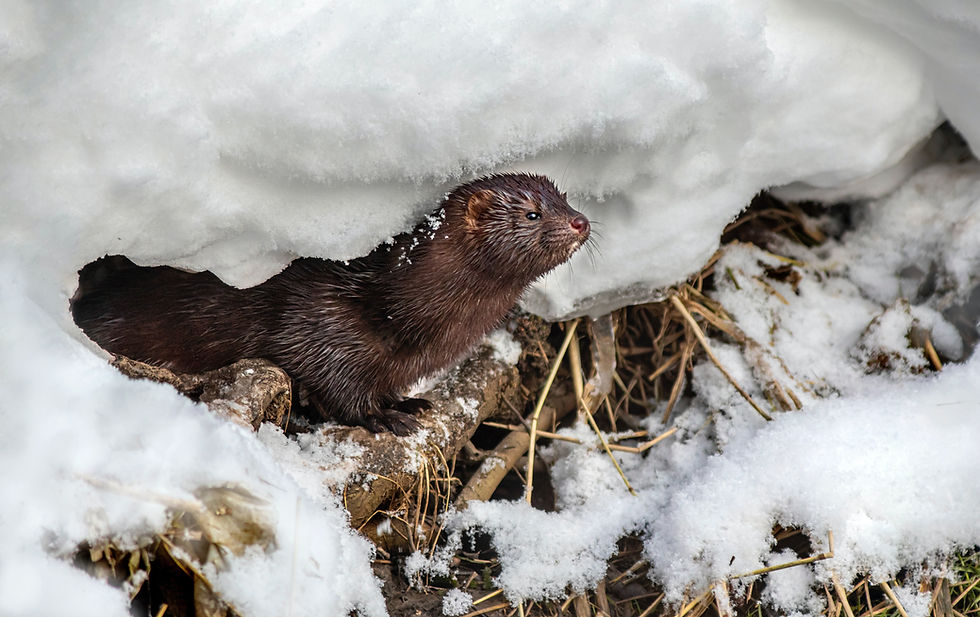Scotland is known for its diverse and unique wildlife, but in recent years, a number of invasive animal species have become a major threat to the country's native ecosystems and wildlife. In this blog post, we'll take a closer look at the five most invasive animals in Scotland and the impacts they're having on the environment.

American signal crayfish (Pacifastacus leniusculus)
The American signal crayfish is a non-native species of crayfish that was introduced to Scotland in the 1970s. This species is now widespread in Scotland, particularly in rivers and lochs. The American signal crayfish is highly aggressive and outcompetes native species of crayfish for food and habitat. The species is also known to cause significant damage to river banks and other habitats by burrowing into the banks and undermining them. This species is considered one of the most damaging invasive species in Scotland and is a major threat to the country's native crayfish and other freshwater species (Environment Agency, 2021).

Grey squirrel (Sciurus carolinensis)
The grey squirrel is a non-native species of squirrel that was introduced to Scotland in the late 19th century. This species is now widespread in Scotland and is having a significant impact on the country's native red squirrel population, as well as its woodland habitats. The grey squirrel is a highly efficient predator and is known to outcompete native red squirrels for food and habitat (Scottish Natural Heritage, 2019). Additionally, the species is known to carry diseases that can be harmful to native wildlife and domestic animals.

Raccoon dog (Nyctereutes procyonoides)
The raccoon dog is a non-native species of canid that was introduced to Scotland in the 20th century. This species is now established in Scotland and is spreading rapidly. The raccoon dog is highly adaptable and can survive in a wide range of habitats, including urban areas. This species is known to prey on native species of wildlife, such as ground-nesting birds, and can also carry diseases that can be harmful to native wildlife and domestic animals (Scottish Natural Heritage, 2020).

Red-eared slider (Trachemys scripta elegans)
The red-eared slider is a non-native species of turtle that was introduced to Scotland in the 20th century. This species is now widespread in Scotland, particularly in urban areas, and is having a significant impact on native freshwater species. The red-eared slider is a highly adaptable species and is known to outcompete native species for food and habitat. The species is also known to carry diseases that can be harmful to native wildlife and domestic animals (Scottish Natural Heritage, 2021).

Mink (Neovison vison)
The mink is a non-native species of mustelid that was introduced to Scotland in the 20th century. This species is now established in Scotland and is having a significant impact on the country's native river otter population, as well as its freshwater habitats. The mink is a highly efficient predator and is known to outcompete native river otters for food and habitat (Scottish Natural Heritage, 2020). Additionally, the species is known to carry diseases that can be harmful to native wildlife and domestic animals.

In conclusion, these five invasive animal species are causing significant harm to Scotland's ecosystems and wildlife. It is important that we take action to control their spread and minimise their impacts on the environment. This can include removing invasive animals from the landscape, preventing the introduction of new species, and promoting the use of native species in gardens and landscaping. By taking these actions,we can help protect Scotland's unique and diverse wildlife for future generations to enjoy. It's also important to note that invasive species are not just a problem in Scotland, but a global issue that requires international cooperation and action. By raising awareness and working together, we can help protect our natural heritage and preserve the biodiversity of our planet.

References:
Environment Agency. (2021). American signal crayfish. https://www.gov.uk/guidance/american-signal-crayfish
Scottish Natural Heritage. (2019). Grey squirrels. https://www.nature.scot/grey-squirrels
Scottish Natural Heritage. (2020). Raccoon dog. https://www.nature.scot/raccoon-dog
Scottish Natural Heritage. (2021). Red-eared slider turtle. https://www.nature.scot/red-eared-slider-turtle
Scottish Natural Heritage. (2020). Mink. https://www.nature.scot/mink
Scottish Biodiversity. (2020). Invasive non-native species. https://www.biodiversityscotland.gov.uk/themes/invasive-non-native-species

תגובות